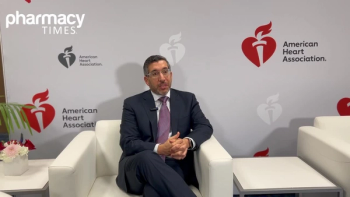
Assessing a REMS Strategy: Keep It Simple and Responsible
Manufactures are faced with multiple challenges as the FDA imposes far-reaching requirements for their production.
Manufactures are faced with many challenges as the FDA imposes far-reaching requirements for their production.
Expanded FDA Authority
The passage of FDAAA Title IX in September 2007 has expanded the FDA’s authority and reach regarding safety standards around many drug approvals. A key provision, Risk Evaluation and Mitigation Strategies (REMS), is fast becoming part of the regulatory approval landscape. A significant impact of this expanded authority is that a REMS requirement may have meaning to significant numbers of pharmaceutical and biotech manufacturers.
The FDA Guidance is very clear that literally every New Drug Application (NDA) under review has the possibility of a REMS requirement. Further, with an FDA pipeline rich in niche products for narrow therapeutic areas, manufacturers will need to be “market knowledgeable”—not only about the FDA requirements, but equally, about the distribution partners who will be providing the marketbased solutions.
In addition, the FDA has the authority to require a REMS post-approval. Manufacturers are faced with a myriad of challenges as they attempt to predict the potentially far-reaching requirements that the FDA could impose impacting approval of their products. The requirements may range from a simple medication guide to a communication plan to Elements to Assure Safe Use (ETASU). These more comprehensive REMS programs with ETASU may include such components as a patient registry and physician and pharmacy certification, to name a few.
Real World Solutions Are Not a Theory
It is essential that the entire team involved with the product’s launch be engaged in the process. Frequently, we’ve observed the team working on the NDA or Biologics License Application not engage the commercial team. Often this communication silo results in a submission that may include REMS strategies that are counterintuitive to an efficient supply chain.
So, the “win” of an approval can often net out to a more challenging launch than might be necessary. Teams must include members from managed markets and sales to round out the strategy, or at least be given access to the submission elements around a proposed REMS solution. Some guidelines include:
- Identifying the necessary alignment of the end-to-end health care delivery model early.
- Review capabilities of all possible participants using a standardized format that enables an “apples-to-apples” comparison.
- Identify optimal distribution strategy based on product profile, patient requirements, physician requirements, market size, and data requirements.
- Design a REMS solution to fit the optimal distribution model based on providing appropriate access to the physician and patient communities.
- Implement a “real world” REMS solution that is operational today and scalable in the future.
In reviewing REMS requirements, a manufacturer may find that the “old” is “new” again. Many products, particularly in the specialty pharmacy sector, contain distribution and patient management requirements that entail all or parts of what is quickly becoming a REMS requirement. That said, many infusion suites and retail outlets are also providing distribution and data collection for products with unique requirements. As REMS requirements become reality, many of the distribution channel participants have developed (or are developing) the enhanced systems necessary to support current and future REMS.
To develop a successful REMS solution is to engage all of your company’s assets and “Keep It Simple and Responsible,” or KISR.
Table. Questions to Pose When Assessing a REMS Strategy
QUESTION
YES / NO
Are you aware of the multiple options for creative REMS compliant distribution strategies in today’s health care environment?
Yes/No
Does your product profile best fit a retail, specialty pharmacy, hospital, home infusion or some combination for an optimum distribution model?
Yes/No
Can your REMS strategy deliver an end to end solution ensuring alignment of all of the REMS components?
Yes/No
Will your selected solution be executable in the “real world” based on the products optimal channel strategy?
Yes/No
Will your REMS solution meet the goals of risk mitigation and patient access?
Yes/No
Have you contemplated any and all possible FDA scenarios and are you prepared to act?
Yes/No
Is your solution scalable in the optimum distribution model?
Yes/No
Dan Steiber, RPh, is a principal of D2 Pharma Consulting LLC and is a licensed pharmacist in Texas, Washington, California, and Pennsylvania. Mr. Steiber graduated from Washington State University College of Pharmacy. He has participated in a variety of postgraduate programs in law and business development/marketing at Harvard University and Northwestern University.
Newsletter
Stay informed on drug updates, treatment guidelines, and pharmacy practice trends—subscribe to Pharmacy Times for weekly clinical insights.















































































































































































































